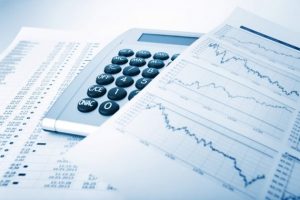
In India, a company declaring or distributing dividends is required to pay a Corporate Dividend Tax in addition to the tax levied on their income. The dividend received by the shareholders is then exempt in their hands. Now, the Indian government taxes dividend income in the hands of investor according to income tax slab rates. If your corporation makes a profit, you can either invest the profit back into your business as, or pay it to your shareholders.
While cash dividends have a straightforward effect on the balance sheet, the issuance of stock dividends is slightly more complicated. Stock dividends are sometimes referred to as bonus shares or a bonus issue. A dividend is a distribution of profits by a corporation to its shareholders.[1] When a corporation earns a profit or surplus, it is able to pay a portion of the profit as a dividend to shareholders. Any amount not distributed is taken to be re-invested in the business (called retained earnings). The current year profit as well as the retained earnings of previous years are available for distribution; a corporation is usually prohibited from paying a dividend out of its capital. Distribution to shareholders may be in cash (usually by bank transfer) or, if the corporation has a dividend reinvestment plan, the amount can be paid by the issue of further shares or by share repurchase.

The value of allocated dividend is usually reported on your profit and loss. When you company has agreed the dividend amount, enter this as a journal. We recommend that you create the following ledger accounts to record your dividends.
What Happens to Retained Earnings When a Dividend Is Paid?
Applying Generally Accepted Accounting Procedures (GAAP), which is required for any public company and a good practice for private companies, means recording the dividend when it is incurred. In other words, for each $1 in profit, the company paid its investors $0.20. It also shows how much money the company returns to its shareholders in contrast to the money they keep or retain. Get instant access to video lessons taught by experienced investment bankers. Learn financial statement modeling, DCF, M&A, LBO, Comps and Excel shortcuts. If you are not sure how to move this value to your profit and loss, you may want to speak to your accountant about which nominal code to use.
- Firms can pay dividends in periods in which they incurred losses, provided retained earnings and the cash position justify the dividend.
- Stock dividends and stock splits are issued to reduce the market price of capital stock and keep potential investors interested in the possibility of acquiring ownership.
- If you have a different numbering system, just use the number that suits your business.
- This is an important date for any company that has many shareholders, including those that trade on exchanges, to enable reconciliation of who is entitled to be paid the dividend.
- Some companies have dividend reinvestment plans, or DRIPs, not to be confused with scrips.
In the United States and many European countries, it is typically one trading day before the record date. This is an important date for any company that has many shareholders, including those that trade on exchanges, to enable reconciliation of who is entitled to be paid the dividend. Existing shareholders will receive the dividend even if they sell the shares on or after that date, whereas anyone who bought the shares will not receive the dividend.
Forms of payment
To date, three hundred thousand of these shares have been issued but twenty thousand shares were recently bought back as treasury stock. Thus, 280,000 shares are presently outstanding, in the hands of investors. After some deliberations, the board of directors has decided to distribute a $1.00 cash dividend on each share of common stock. A dividend is a method of redistributing a company’s profits to shareholders as a reward for their investment.
- These companies pay their shareholders regularly, making them good sources of income.
- In India, a company declaring or distributing dividends is required to pay a Corporate Dividend Tax in addition to the tax levied on their income.
- Once the dividend is approved by the company’s directors in their annual general meeting, it becomes payable to the shareholders.Dividend payable is a liability for the company till the time it is paid.
Dividends are a portion of a company’s profit that is paid out to each shareholder, in addition to any gains a shareholder gets when the price of the company’s stock increases. The distribution of profits by other forms of mutual organization also varies from that of joint-stock companies, though may not take the form of a dividend. In many countries, the tax rate on dividend income is lower than for other forms of income to compensate for tax paid at the corporate level. Taxation of dividends is often used as justification for retaining earnings, or for performing a stock buyback, in which the company buys back stock, thereby increasing the value of the stock left outstanding. Payment date – the day on which dividend cheques will actually be mailed to shareholders or the dividend amount credited to their bank account. If you have more than one shareholder, you may need to record multiple payments.
Dividend taxation
A small size dividend (less than 20–25% of outstanding shares) is usually valued at the market value of the stock. A large size dividend (more than 20–25% of outstanding shares) is usually valued at par or stated value. Once the previously declared cash dividends are distributed, the following entries are made on the date of payment. Dividends Payable is classified as a current liability on the balance sheet, since the expense represents declared payments to shareholders that are generally fulfilled within one year. In the case of mutual insurance, for example, in the United States, a distribution of profits to holders of participating life policies is called a dividend. As a contrasting example, in the United Kingdom, the surrender value of a with-profits policy is increased by a bonus, which also serves the purpose of distributing profits.
Many corporations distribute cash dividends after a formal declaration is passed by the board of directors. Journal entries are required on both the date of declaration and the date of payment. The date of record and the ex-dividend date are important in identifying the owners entitled to receive the dividend but no transaction occurs. Preferred stock dividends are often cumulative so that any dividends in arrears must be paid before a common stock distribution can be made.
How to record dividends
A large dividend is when the stock dividend impacts the share price significantly and is typically an increase in shares outstanding by more than 20% to 25%. In addition to cash dividends, companies can also pay stock dividends. This type of dividends increases the number of shares outstanding by giving new shares to shareholders. Instead of reducing cash, stock dividends increase the number of shares. Ex-dividend date – the day on which shares bought and sold no longer come attached with the right to be paid the most recently declared dividend.
It is a liability of the company and has to be paid within the time frame decided. When the board announces the dividend, an account called ‘Dividend Payable A/c’ is credited with the amount of dividend to be paid, and Retained Earnings A/c is debited with the same amount. The dividend declaration, ex-dividend, date of record and payment dates are the four significant dates when it comes to dividends.
Agree Realty: 4.4% Monthly Dividends With A Superior Business … – Seeking Alpha
Agree Realty: 4.4% Monthly Dividends With A Superior Business ….
Posted: Mon, 31 Jul 2023 13:55:42 GMT [source]
Stock dividends and stock splits are issued to reduce the market price of capital stock and keep potential investors interested in the possibility of acquiring ownership. A stock dividend is recorded as a reduction in retained earnings and an increase in contributed capital. However, stock dividends have no immediate impact on the financial condition of either the company or its stockholders. When a stock dividend is declared, the total amount to be debited from retained earnings is calculated by multiplying the current market price per share by the dividend percentage and by the number of shares outstanding. If a company pays stock dividends, the dividends reduce the company’s retained earnings and increase the common stock account.
Stock values fluctuate, however, and dividend payouts are based on a per share value instead of a per dollar value, thus they change based on the stock’s performance. When calculating the dividend for a given year, subtract the retained earnings at the start of the year from the year-end figure. Thus, the proposed dividend is neither shown as current liabilities nor as a short-term provision in the current Balance Sheet of a company but shall be disclosed in Notes to Accounts. Amended Accounting Standard read with Schedule 3 of Companies Act 2013 inter-alia provides that proposed dividend should only be shown as a footnote to the balance sheet. This is useful in measuring a company’s ability to keep paying or even increasing a dividend.

Life insurance dividends and bonuses, while typical of mutual insurance, are also paid by some joint stock insurers. Not surprisingly, the investor makes no journal entry in accounting for the receipt of a stock dividend. As you would expect, dividends shouldn’t impact the operating activities of your company. That means declaring, paying, and recording dividends won’t change anything on your income statement or profit and loss statement. The reason to perform share buybacks as an alternative means of returning capital to shareholders is that it can help boost a company’s EPS.
For example, cash dividend payments usually drop after a stock dividend but not always in proportion to the change in the number of outstanding shares. An owner might hold one hundred shares of common stock in a corporation that has paid $1 per share as an annual cash dividend over the past few years (a total of $100 per year). After a 2-for-1 stock dividend, this person now owns two hundred shares. The board of directors might adp run review then choose to reduce the annual cash dividend to only $0.60 per share so that future payments go up to $120 per year (two hundred shares × $0.60 each). The investors can merely hope that additional cash dividends will be received. Companies that do not want to issue cash dividends (usually when the company has insufficient cash) but still want to provide some benefit to shareholders may choose to issue share dividends.
A share dividend distributes shares so that after the distribution, all shareholders have the exact same percentage of ownership that they held prior to the dividend. The existence of a cumulative preferred stock dividend in arrears is information that must be disclosed in financial statements. Only dividends that have been formally declared by the board of directors are recorded as liabilities. If cumulative, a note to the financial statements should explain Wington’s obligation for any preferred stock dividends in arrears. Cash dividends are earnings that companies pass along to their shareholders.
After your date or record, your liabilities will increase and your retained earnings will decrease. Then after the payment, both your cash account and your liability will be reduced. Since accountants at Your Co. have already created the liability (Dividends Payable) and have not yet paid the cash dividend, no accounting financial statement is changed.
In the general ledger hierarchy, it usually nestles under current liabilities. The Board’s declaration includes the date a shareholder must own stock to qualify for the payment along with the date the payments will be issued. Most of the time, businesses and business owners aren’t required to issue dividends. When they declare a cash dividend, some companies debit a Dividends account instead of Retained Earnings.
Because financial transactions occur on both the date of declaration (a liability is incurred) and on the date of payment (cash is paid), journal entries record the transactions on both of these dates. The Dividends Payable account appears as a current liability on the balance sheet. A cumulative dividend means if dividends are declared, preferred stockholders will receive their current‐year dividend plus any dividends not paid in prior years before the common stockholders receive a dividend.

